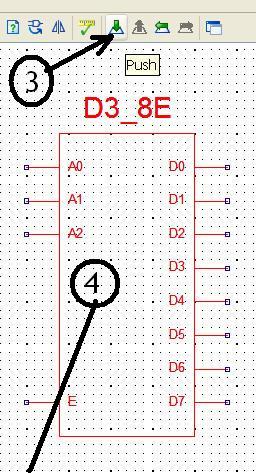
The test bench is the file through which we give inputs and observe the outputs. Here is the full code: module Demultiplexer_1_to_4_case (output reg Y, input A, input din) Ģ'b00 : begin Y = din Y = 0 endĢ'b10 : begin Y = din Y = 0 endĢ'b11 : begin Y = din Y = 0 endĮndmodule Test bench for the demultiplexer

Observe that we are not specifying the structure of the circuit, we are only creating the logic of the circuit which can implement that hardware. This modeling is based on the behavior of the circuit hence it is called behavioral modeling. After this, those statements are mentioned, such as the output port Y should be attached to the din, Y to 0, and so on, according to the truth table. The terms begin and end are part of the Verilog syntax if you are writing more than one statement in that block. The colon then marks the end of a case item and starts the action that must happen in that particular case. These cases indicate that, according to the value of A, one of the four statements is selected. So, now we can write case (A)Īs we see here in the first case, 2'b00 represents the case when the input A is 2'b00. If the expression corresponds to any of the case_item, then those design statements are executed. First, let us see the general format to write a case statement in Verilog. The case statement in Verilog is analogous to switch-case in C language. Then inside always block we write, case (A) * would mean that the code itself has to decide on the input signals of the sensitivity list. Note that the always statement always A) could be written as always *. In Verilog, begin embarks and end concludes any block which contains more than one statement in it. is a part of the syntax, used before the sensitivity list. It controls when the statements in the always block are to be evaluated. The sensitivity list includes all input signals used by the always block. (Y, A) is known as the sensitivity list or the trigger list. Using the always statement, a procedural statement in Verilog, we will run the program sequentially. Next up, since its behavioral modeling style, here comes the always statement. here signifies that the output is of 4 bits.

module Demultiplexer_1_to_4_case (Y, A, din) The reg data object holds its value from one procedural assignment statement to the next and means it holds its value over simulation data cycles.Īnother style of declaration in the port list is to declare the port size and port direction after the module declaration.

Hence, states that the port named as A is a vector with MSB = 1 and LSB = 0. If a port has multiple bits, then it is known as a vector. Taking into consideration the first line of the code, Demultiplexer_1_to_4_case is the identifier, the input is called port direction.


 0 kommentar(er)
0 kommentar(er)
